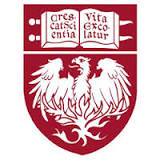Correlation of Lung Biopsy, BAL, and High Resolution CT Scan in Lung Transplantation
| Status: | Completed |
|---|---|
| Conditions: | Bronchitis, Pulmonary |
| Therapuetic Areas: | Pulmonary / Respiratory Diseases |
| Healthy: | No |
| Age Range: | 18 - 65 |
| Updated: | 8/20/2016 |
| Start Date: | August 2007 |
| End Date: | December 2009 |
Correlation of Lung Biopsy, BAL, and High Resolution CT Scan in Lung Transplantation. Can We Help Diagnose Acute Rejection and Better Predict Bronchiolitis Obliterans?
A major source of graft failure and dysfunction in lung transplantation is known to be
bronchiolitis obliterans (BO)and its clinical correlate called bronchiolitis obliterans
syndrome(BOS). In fact, BOS is the leading cause of death in lung recipients beyond one year
post transplant. Currently, our ability to assess lung injury after transplant is less than
ideal.
The purpose of this study is to use new computerized tomography(CT) technology, specifically
, 64 bit acquisition, to detect and predict the onset of lung injuries, with the hope of
finding better therapies that currently exist.
bronchiolitis obliterans (BO)and its clinical correlate called bronchiolitis obliterans
syndrome(BOS). In fact, BOS is the leading cause of death in lung recipients beyond one year
post transplant. Currently, our ability to assess lung injury after transplant is less than
ideal.
The purpose of this study is to use new computerized tomography(CT) technology, specifically
, 64 bit acquisition, to detect and predict the onset of lung injuries, with the hope of
finding better therapies that currently exist.
Total enrollment : 10
Lung transplant patients will undergo CT Scans before scheduled bronchoscopies which are
routinely performed at 1, 3, 6, 9, and 12 months post transplant. Imaging will be done with
the newest generation scanner, with intent to analyze all pertinent areas of the lung for
pathology, but especially the bronchial anastomoses, the lung parenchyma with focus on gas
exchanging lobules of the lung, and any suspected abnormalities from physical exam,
laboratory tests, or prior chest xray.
CT imaging will precede bronchoscopy and biopsy so that CT interpretation will be
unencumbered by changes due to the bronchoscopic procedure.
Lung transplant patients will undergo CT Scans before scheduled bronchoscopies which are
routinely performed at 1, 3, 6, 9, and 12 months post transplant. Imaging will be done with
the newest generation scanner, with intent to analyze all pertinent areas of the lung for
pathology, but especially the bronchial anastomoses, the lung parenchyma with focus on gas
exchanging lobules of the lung, and any suspected abnormalities from physical exam,
laboratory tests, or prior chest xray.
CT imaging will precede bronchoscopy and biopsy so that CT interpretation will be
unencumbered by changes due to the bronchoscopic procedure.
Inclusion Criteria:
- Lung transplant patients who are at least 18 years of age.
- All patients must be able to give written informed consent.
Exclusion Criteria:
- Lung transplant patients who are unable to undergo a CT Scan.
- Lung transplant patients who are unable to give informed consent.
We found this trial at
1
site
University of Chicago Medical Center The University of Chicago Medicine has been at the forefront...
Click here to add this to my saved trials
